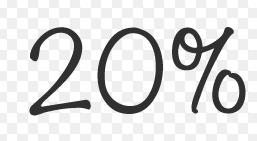Reader question: “I read about some new rule that requires borrowers to put down 20 percent on home loans. QM or QRM or something to that affect. Please say it isn’t so. This seems like a very rigid requirement that will hurt a lot of responsible borrowers like myself. Is there any truth to this? Can I get a conventional home loan in 2015 without putting 20 percent down upfront? I could swing 5 percent and maybe even 10. But definitely not 20.”
You said to “say it isn’t so.” And I’ll say just. It isn’t so. There was a proposal some time back to make a 20% down payment mandatory for most mortgage borrowers. But it met with fierce resistance from industry lobbies and consumer advocate groups, so it never came to fruition. Here’s what you need to know:
Getting a Home Loan With Less Than 20% Down
You can get a conventional loan without putting 20% down. That is, as long as you meet all of the lender’s other requirements for mortgage approval (such as debt ratios, credit scores, employment, etc.).
Jumbo conventional loans are a different story, however. “Jumbo” means more than $470,000 in most parts of the country, or up to $625,500 in certain “high-cost” areas. Many lenders today require a minimum down payment of 20% for their jumbo products.
For the rest of this article, I’ll be referring to conforming home loans — not jumbo.
The rule you are referring to is the Qualified Residential Mortgage (QRM), defined here. The early proposals for this rule called for a 20% minimum down-payment requirement across the board. But this aspect of the proposal caused an uproar from the real estate and mortgage industries (read “lobbyists”), and also from some members of Congress. So it never became an actual requirement for the lending industry.
There are many lenders offering conventional products with down payments less than 20%. Of course, you’ll probably have to pay for private mortgage insurance (PMI) with a loan-to-value ratio above 80%. So let’s talk about that next.
Expect to Pay Extra for Private Mortgage Insurance (PMI)
If you make a down payment below 20% when buying a home, you will likely have to pay for private mortgage insurance, or PMI. These policies are typically required whenever the loan-to-value (LTV) ratio exceeds 80%, which is what happens when you put less money down.
But don’t let the “insurance” name fool you. The policy does not protect or insure you, the borrower. It protects the lender in the event that you default, or stop paying, on your debt obligation. PMI is one of the only forms of insurance where the person who pays the premium (the borrower) receives no protection whatsoever. This is why borrowers who can afford to put down 20% typically do so. They do it to avoid PMI.
Read: Should I put down 20% if I can afford to?
That’s just one of the benefits of making the larger upfront investment. Here’s a complete list of benefits:
- Avoiding PMI. We covered this above. If you put at least 20% down when buying a home, you won’t have to pay for extra insurance on the loan. That’s a major advantage, especially when calculated over the long term.
- Lower rate. Most lenders offer lower mortgage rates to borrowers who put more money down. It reduces the lender’s risk, so they are willing to “reward” you with a better rate. This could also save you a lot of money over the long term.
- Smaller payment. When you put more money down up front, you’ll end up with a smaller monthly mortgage payment. Sure, it requires a larger chunk of change on the front end. But you’ll end up with more disposable income at the monthly level, for years to come.
- Equity building. When you make a 20% payment, you’ll have significant equity (ownership) in the home from day one.
Getting back to the question at hand: Can you get a conventional home loan without having to put 20% down? The answer is yes, assuming you can qualify for a mortgage obligation in the first place. There are many programs and products available that allow you to make a smaller investment. You just have to weigh the pros and cons, as described above.
Look to Credit Unions and Community Banks
Do you have an existing relationship with a local bank or credit union? If so, you should speak to their loan officer about mortgage financing. Credit unions and local community banks often provide conventional home loans with minimum down payments below 20%. Credit unions, in particular, are known for having smaller investment requirements than the “big banks” like Wells Fargo, Citi, and Bank of America.
Of course, you’ll probably still have to pay PMI when making a smaller upfront investment. But if your primary goal is to minimize your upfront, out-of-pocket expense, these options are worth exploring.
In closing, you might want to look into the FHA program as well. It’s not a conventional home loan, which is what you asked about. It’s a government-insured mortgage program. But it does offer a minimum down payment well below 20% — as low as 3.5%, in fact. So it’s worth some additional research.
